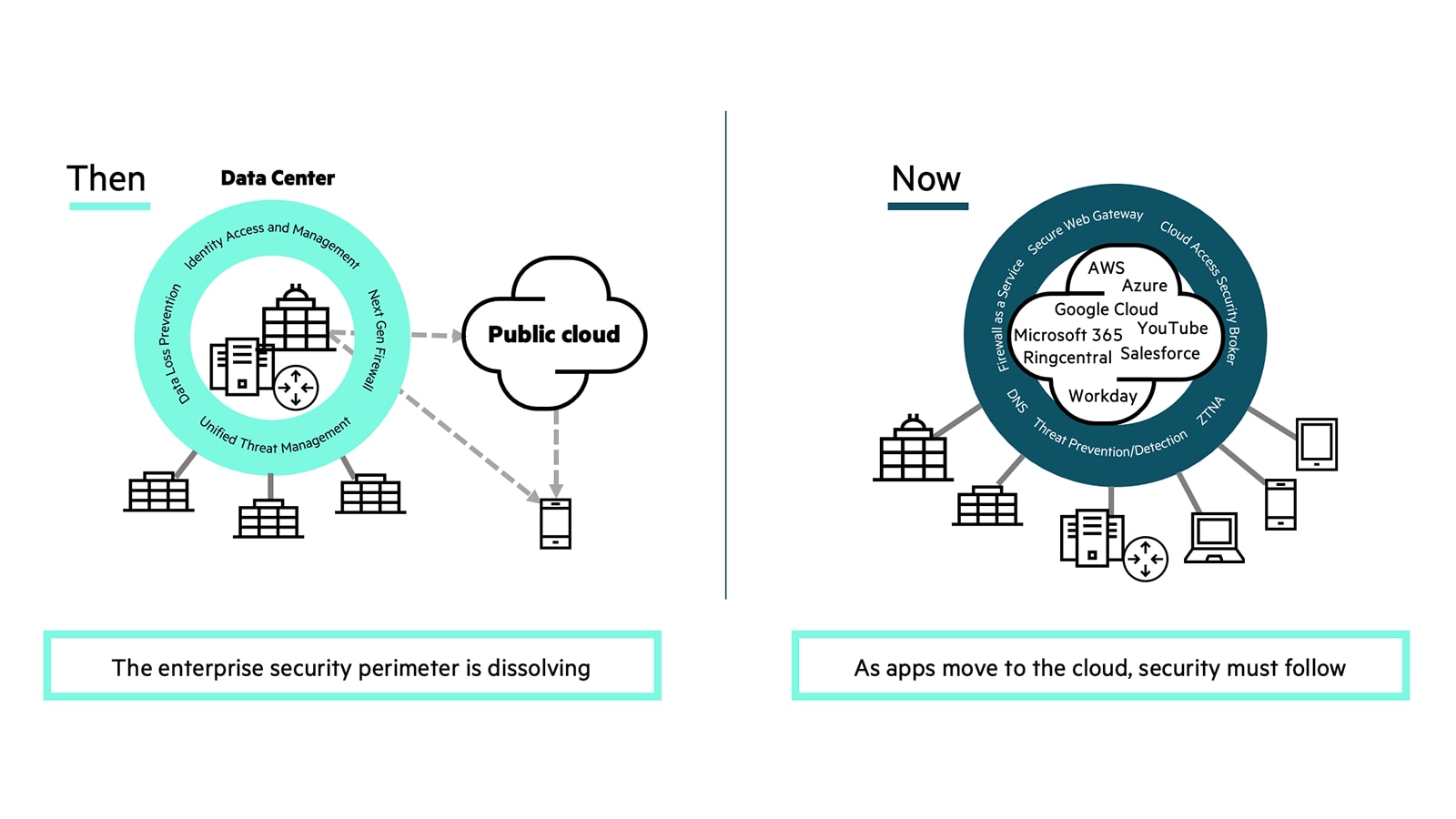
Secure connectivity What is secure connectivity?
With the rise of hybrid work, data breaches and increasingly sophisticated cyber threats, it has become essential for organizations to ensure that employees, devices and systems can connect safely. In the traditional model where all applications were hosted in the data center, organizations could secure connectivity very well. But as applications move to the cloud and workers access applications from anywhere, the security perimeter is dissolving. Secure connectivity combines advanced security technologies such as SASE (secure Access Service Edge) and zero trust networking to enable safe, reliable and efficient communication across multiple locations, networks and devices.

- Why the need for secure connectivity
- How to enable secure connectivity
- HPE Aruba Networking and secure connectivity


Why the need for secure connectivity
The need for secure connectivity has intensified due to:
- Hybrid work: With employees now working from diverse locations, secure connectivity ensures they can safely access corporate applications and resources without compromising security. Hybrid work models require reliable protection against risks associated with unsecured networks and remote devices. By securing remote connections, businesses reduce the vulnerability of sensitive data accessed from anywhere.
- Increased cyber-threats: Cyber-threats are constantly evolving, and without secure connectivity, organizations remain vulnerable to attacks such as phishing, ransomware, and DDoS attacks. Secure connectivity incorporates various security measures to detect, prevent, and respond to threats across all types of networks, protecting both on-premises and remote assets from compromise.
- Sensitive data: Protecting sensitive data, such as customer information, intellectual property, and financial data, is essential for maintaining trust and compliance. Secure connectivity ensures data privacy through encryption, access controls, and security protocols that prevent unauthorized access and data leakage.
- Regulatory requirements: Regulations like GDPR, HIPAA, and PCI DSS require organizations to protect personal and financial data. Secure connectivity helps companies stay compliant by incorporating features that control access, monitor data flows, and audit access logs, reducing the risk of costly fines and reputational damage.
